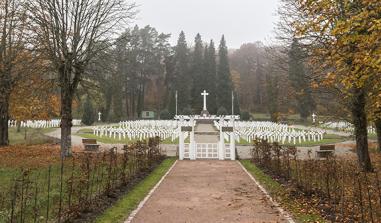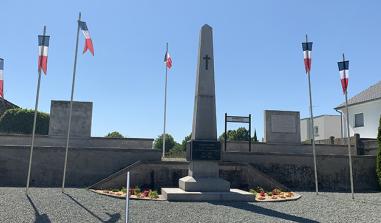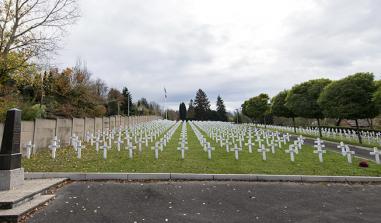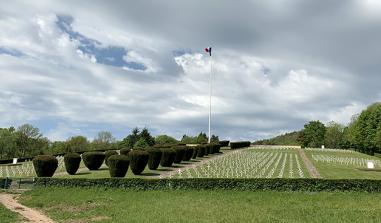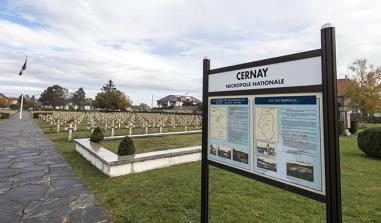Neuf-Brisach
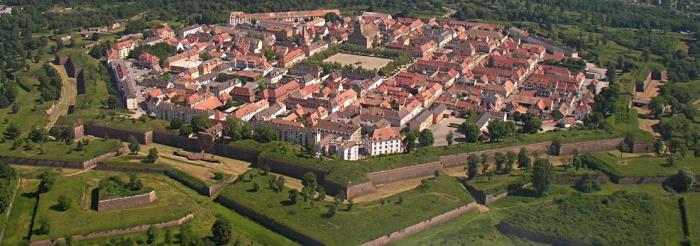
Vue aérienne de Neuf-Brisach. Source : ©Denis DONTENVILLE. http://www.fotocommunity.de
Created in 1697 after the loss of Vieux-Brisach across the Rhine, Neuf-Brisach is the only, yet magnificent, example of Vauban's third system.
In 1697, in accordance with the Ryswick treaties, France had to give back all those towns situated on the right bank of the Rhine, including Brisach. She was thus to lose her foothold in Germany and leave the centre of the Alsace undefended. In 1698 Vauban was despatched to the town and started to build three projects, of which the third one, the most complete, was retained by Louis XIV on 6 September 1698. The highly experienced Vauban, closely following the layout already achieved in Landau, designed a town with a double defensive main front part to increase its resistance to attack and make it less vulnerable to ricochet fire, which he himself had invented.
The town, a perfect octagon, comprises an internal fortified "secure" part, whose fortified defensive walls are flanked by fortified towers and an outer "fighting" area. This is made up of two defensive levels. The first consists of counter-guards serving as an artillery platform, which conceal the fortified towers and tenailles to protect the defensive walls. The second level is made up of half-moons in front of the tenailles, of which only those above the doors have a reduit, and of a covered walkway that encircles the whole town. Within the walls, Neuf-Brisach is arranged into 48 areas around the Place d'Armes. This ias how Neuf-Brisach came to be built from scratch on the left bank of the Rhine a short distance from the old town of Brisach. Construction work, which began in 1700, was carried out quickly so that by March 1702, the town could be used as a defence.
However, the return of Brisach to French rule in 1703 was to be the death knell for Neuf-Brisach. This is why, due to lack of funds, the crowning work that featured in Vauban's plans was abandoned and the first stone of the church of Saint-Louis was not laid until 1731, while the construction of the governor's hall would not be started until 1772. Only a small amount of modernisation work was carried out in the middle of the 19th century to compensate for some defects, in particular the lack of casemates. It was also a question of adapting its defences after the construction of the canal between the Rhone and the Rhine that runs along the slope to the east, by adding a lunette covering a floodgate. After a few alarms in 1814 and 1815, it wasn't until 1870 that Neuf-Brisach was to witness its first siege: besieged from 6th October 1870, it was subjected to violent artillery fire between the 2nd and 10th November before capitulating on the 11th November.
However Neuf-Brisach's military purpose was never to be fulfilled. The Germans would significantly alter the ramparts, as well as the urban layout of the ancient fortified town, turning it into a key constituent of the Neuf-Brisach bridgehead, intended to protect an important crossing point on the Rhine using several very modern fortifications. In June 1940, the breaching of the Rhine by the Germans in the Neuf-Brisach area was to be marked by intense fighting, before the town temporarily became the largest prisoner of war camp in France. Neuf-Brisach was to be severely bombarded once more, this time by American troops at the end of the Second World War.
Tourist Office Point I Neuf-Brisach 6, place d'Armes 68600 Neuf-Brisach Tel. 03 89 72 56 66 Fax: 03 89 72 91 73 E-mail: info@tourisme-rhin.com
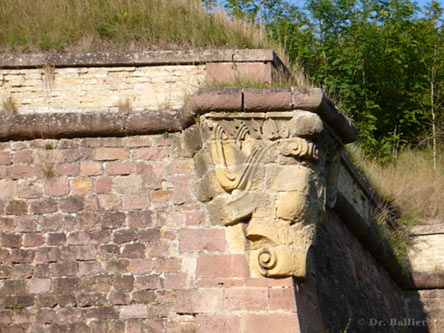
Ornement à l'angle d'une courtine. Source : Dr. Balliet Jean-Marie
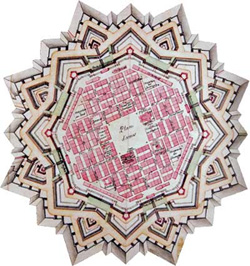
Plan de Neuf-Brisack. Source : SHD
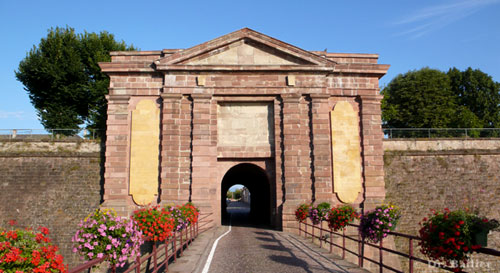
Porte de Colmar. Source : Dr. Balliet Jean-Marie
Practical information
68600
Neuf-Brisach
Tél. 03 89 72 56 66Fax : 03 89 72 91 73
Accessible toute l'année



